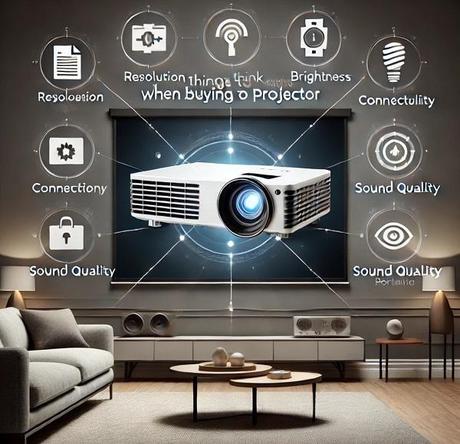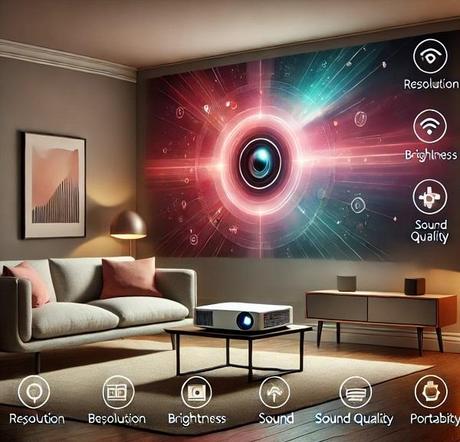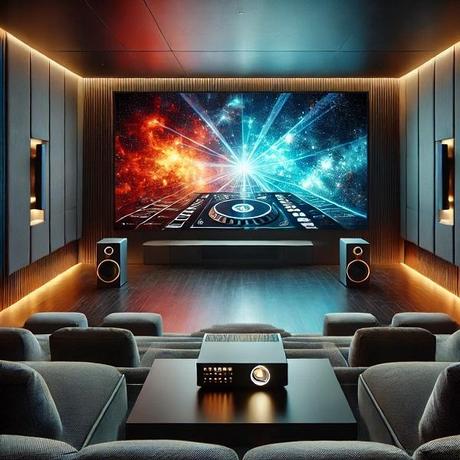
Buying a projector is not an easy task considering the large number of options in the market against the very little information available to consumers. It’s not as simple as just choosing one that will accept your image source and project it on your desired screen with the best color and pixel density you can get. There are many other factors involved. That doesn’t take too much to understand but the technical language used in the marketing and packaging might be a little tough to get around. That is why you need to go to the market with a budget, model options and specifications you can’t negotiate on. Whether you are looking for a projector for a large hall, a medium-sized classroom or living room or a nice little pocket projector for your camp, this list will arm you with all the information you need to choose the right one.
What Will You Be Projecting Most Frequently?
Different projectors are designed to project different things in different types of spaces. If you are looking for a projector to use at home, you need high contrast and resolutions so that your moving images will be crystal clear when projected. You may not need as much brightness because you may not have much ambient light in the house when using the projector to display videos or games. You also need a higher throw ratio meaning clearer images when projecting from a short distance away from the screen because you may be using the projector in a small room. Projectors for presentations and other business purposes will be projecting high-quality images and articles in large and well-lit rooms so you need higher color clarity and more brightness. You also need more input options when dealing with a business projector.
Brightness
This is the one thing that will determine which projector actually works for you. Projector brightness is measured in lumens beginning at 1000 lumens to over 3000 lumens. The brighter the projector, the more ambient light it can project in which means that a 3000-lumen projector will work better in a room with ambient light than a 1500 lumen projector. Anything between 1000 and 3000 lumens will work in your home. You just need to deal with the amount of ambient light coming into the room. If you are planning on projecting outdoors, then you should go for more lumens. It never hurts to be able to project in more places with the same projector. Business projectors especially need more brightness because halls and offices tend to be well lit and low brightness will mean poor image quality.
Throw Ratio
The throw ratio simply means the ratio of distance between the lens and your screen and the size of screen you will get. The throw ratio is rarely an issue when choosing a projector once you have the brightness and contrast right but it determines the quality of images you will get in whatever room you intend to project in. The best way to get around this is to give yourself two feet of room for every one foot of screen that you need. That means that if you need at least 16 feet of room if you want a 100-inch screen to project on. You can reduce that if you are using the projector at home though which is why a lower throw ratio is always better for a home theater projector.

Noise
Yes! Projectors will get really hot if your fan stops working which is why you need to use the projector in a well-ventilated area and put up with the noise. Technology has advanced over the years and you can get projectors that are quitter depending on the lamp they use. DLP projectors are generally noisier than LCD ones. You can also check the sound rating to ensure that your projector has a low one, especially if you intend to use it in a small room at home.
Contrast
Contrast simply refers to the ratio of whiteness to blackness on your projector. It is always something between, 1000:1 and it can go as high as 1million to 1. The one refers to the black image. You should know that the higher your white image figure is, the more detail you can see on your projector, especially with ambient light available. However, having too high contrast may not be good for your home theater projector which is why most of them range between 10,000 and 20,000. Business projectors need to show more detail than motion and therefore higher contrast readings are alright with them.
Light Hours
Just like your light bulb, a projector bulb has something called a half-life which means that after those hours, your bulb will be half as bright as it was when you bought it. The cost of the best projector bulbs keeps going up so the more hours you have in the specifications, the longer your projector may serve you. The location of use may affect the half-life though since dust and scratches affect the quality of light.
Zoom Range and Len Adjustments
This is another feature that you should never ignore. The possibility of adjusting the screen size and throw ratio to your room at different times is a feature that every projector owner dreams of. You should check whether the projector will allow you to choose between long throw and short throws so that you can shift the lens and enjoy high image quality in whatever room you are in.

Resolution
This is the feature that will determine whether the image you are trying to project will hit your screen at the same quality as it was at the source. If you are planning to project most modern games and movies which are between 720P and 1080P in resolution, you should go for a 1920P by 1080P projector. When you decide to go 4K, you have to check and ensure that the projector they are selling you can actually display 3840 by 2160 Pixels. Some regular 1080P projectors will be marketed as 4K so you have to check the manufacturer’s output specification.
Input Options
VGA and HDMI ports are the basic input methods available on most popular brands so you don’t have to worry about those. Most modern game and TV boxes might need to connect via USB or Bluetooth though. You may also need WIFI and Ethernet connectivity if you plan on streaming content online. It is better to go for a projector that offers as many inputs as you will need in your day to day use.
Portability
Many people assume that business projectors don’t need to be moved around a lot but that is not true. You need to move from office to office and being able to project on the go can be a huge advantage. That is why traditional bulky projectors with many cables are not that popular anymore. You also need a projector that can be set up anywhere without affecting quality.
Buying a projector can be an exciting but overwhelming decision with so many features to consider. Whether you’re setting up a cozy home theater, a high-tech office, or simply looking to enjoy movies in a big way, understanding the key factors can make all the difference in getting the most out of your investment. By keeping these ten important considerations in mind, you’ll be well on your way to finding the perfect projector for your needs and creating an unforgettable viewing experience.
Ready to dive deeper into the world of projectors? Share your favorite tips or projector experiences in the comments! If you found this guide helpful, be sure to subscribe for more expert advice and recommendations on the best tech for your home and lifestyle. Don’t miss out on our upcoming reviews and buying guides to make your next purchase even easier!

